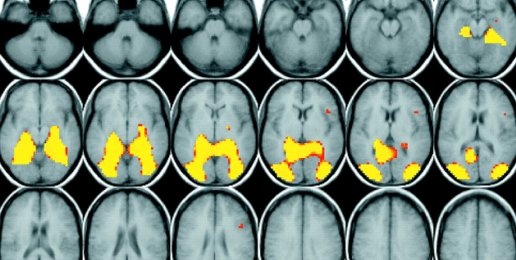
We are fast becoming a pornographic society. Over the course of the last decade, explicitly sexual images have crept into advertising, marketing, and virtually every niche of American life. This ambient pornography is now almost everywhere, from the local shopping mall to prime-time television.
By some estimations, the production and sale of explicit pornography now represents the seventh-largest industry in America. New videos and internet pages are produced each week, with the digital revolution bringing a host of new delivery systems. Every new digital platform becomes a marketing opportunity for the pornography industry.
To no one’s surprise, the vast majority of those who consume pornography are males. It is no trade secret that males are highly stimulated by visual images, whether still or video. That is not a new development, as ancient forms of pornography attest. What is new is all about access. Today’s men and boys are not looking at line pictures drawn on cave walls. They have almost instant access to countless forms of pornography in a myriad of formats.
But, even as technology has brought new avenues for the transmission of pornography, modern research also brings a new understanding of how pornography works in the male brain. While this research does nothing to reduce the moral culpability of males who consume pornography, it does help to explain how the habit becomes so addictive.
As William M. Struthers of Wheaton College explains, “Men seem to be wired in such a way that pornography hijacks the proper functioning of their brains and has a long-lasting effect on their thoughts and lives.”
Struthers is a psychologist with a background in neuroscience and a teaching concentration in the biological bases of human behavior. In Wired for Intimacy: How Pornography Hijacks the Male Brain, Struthers presents key insights from neuroscience that go a long way toward explaining why pornography is such a temptation for the male mind.
“The simplest explanation for why men view pornography (or solicit prostitutes) is that they are driven to seek out sexual intimacy,” he explains. The urge for sexual intimacy is God-given and essential to the male, he acknowledges, but it is easily misdirected. Men are tempted to seek “a shortcut to sexual pleasure via pornography,” and now find this shortcut easily accessed.
In a fallen world, pornography becomes more than a distraction and a distortion of God’s intention for human sexuality. It comes as an addictive poison.
Struthers explains:
Viewing pornography is not an emotionally or physiologically neutral experience. It is fundamentally different from looking at black and white photos of the Lincoln Memorial or taking in a color map of the provinces of Canada. Men are reflexively drawn to the content of pornographic material. As such, pornography has wide-reaching effects to energize a man toward intimacy. It is not a neutral stimulus. It draws us in. Porn is vicarious and voyeuristic at its core, but it is also something more. Porn is a whispered promise. It promises more sex, better sex, endless sex, sex on demand, more intense orgasms, experiences of transcendence.
Pornography “acts as a polydrug,” Struthers explains. As Dr. Patrick Carnes asserts, pornography is “a pathological relationship with a mood-altering experience.” Boredom and curiosity lead many boys and men into experiences that become more like drug addiction than is often admitted.
Why men rather than women? As Struthers explains, the male and female brains are wired differently. “A man’s brain is a sexual mosaic influenced by hormone levels in the womb and in puberty and molded by his psychological experience.” Over time, exposure to pornography takes a man or boy deeper along “a one-way neurological superhighway where a man’s mental life is over-sexualized and narrowed. This superhighway has countless on-ramps but very few off-ramps.
Pornography is “visually magnetic” to the male brain. Struthers presents a fascinating review of the neurobiology involved, with pleasure hormones becoming linked to and released by the experience of a male viewing pornographic images. These experiences with pornography and pleasure hormones create new patterns in the brain’s wiring, and repeated experiences formalize the rewiring.
And then, enough is never enough. “If I take the same dose of a drug over and over and my body begins to tolerate it, I will need to take a higher dose of the drug in order for it to have the same effect that it did with a lower dose the first time,” Struthers reminds us. So, the experience of viewing pornography and acting out on it creates a demand in the brain for more and more, just to achieve the same level of pleasure in the brain.
While men are stimulated by the ambient sexual images around them, explicit pornography increases the effect. Struthers compares this to the difference between traditional television and the new high definition technologies. Everything is more clear, more explicit, and more stimulating.
Struthers explains this with compelling force:
Something about pornography pulls and pushes at the male soul. The pull is easy to identify. The naked female form can be hypnotizing. A woman’s willingness to participate in a sexual act or expose her nakedness is alluring to men. The awareness of one’s own sexuality, the longing to know, to experience something as good wells up from deep within. An image begins to pick up steam the longer we look upon it. It gains momentum and can reach a point where it feels like a tractor-trailer rolling downhill with no brakes.
Wired for Intimacy is a timely and important book. Struthers offers keen and strategic insights from neurobiology and psychology. But what makes this book truly helpful is the fact that Struthers neither leaves his argument to neuroscience, nor does he use the category of addiction to mitigate the sinfulness of viewing pornography.
Sinners naturally look for fig leaves to hide sin, and biological causation is often cited as a means of avoiding moral responsibility. Struthers does not allow this, and his view of pornography is both biblical and theologically grounded. He lays responsibility for the sin of viewing pornography at the feet of those who willingly consume explicit images. He knows his audience—after all, his classrooms are filled with young male college students. The addict is responsible for his addiction.
At the same time, any understanding of how sin works its deceitful evil is a help to us, and understanding how pornography works in the male mind is a powerful knowledge. Pornography is a sin that robs God of his glory in the gift of sex and sexuality. We have long known that sin takes hostages. We now know another dimension of how this particular sin hijacks the male brain. Knowledge, as they say, is power.






















